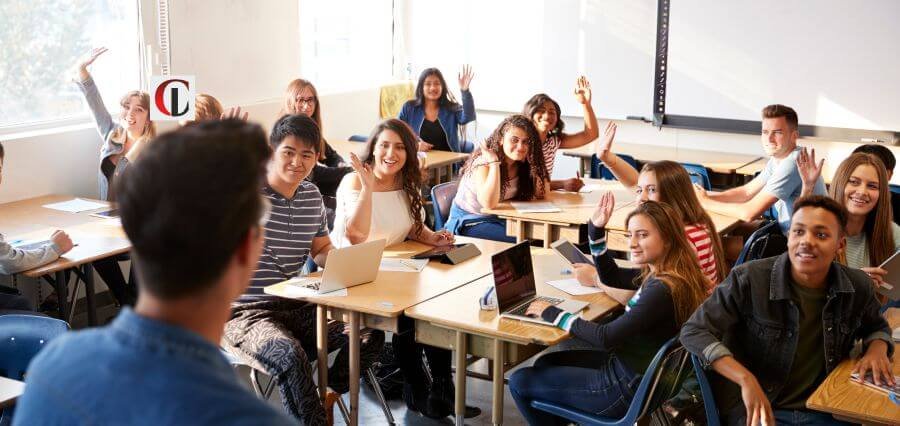Instilling leadership qualities in students is not about putting them in line for eventual job placements, but rather placing them in positions to be responsible for the ability to motivate, collaborate, and create change within any environment to which they might be assigned. These skills, if instilled at an early an stage, can make young adults capable of being productive and contributing members of society. Leadership development is an intentional and strategic process that involves academic advising, experiential learning, and mentoring.
A majority of students have untapped leadership potential, and if guided in the right manner, can lead to a real personal change. Individual change as a leader begins with self-awareness, developing interpersonal, communication, and decision-making competencies. Schools and education organizations are at the center of such identification and building of skills through formal as well as informal processes.
Creating a Climate for Growth
Supportive learning culture is the gateway to leadership traits among students. It involves fostering a culture of inquiry, teamwork, and enterprise. If students feel secure to speak freely and take considered risks without fear of ridicule or failure, they can go ahead and become leaders with confidence. School leaders and teachers can contribute towards developing such a culture by having respectful communication, active listening, and empathy.
Apart from this, identification and recognition of leadership behavior in the daily classroom also contribute significantly to improving the confidence and motivation of a student. When a student manages group projects, mediates peer conflicts, or proposes new ideas, recognition by teachers at the appropriate moment revalidates the target behavior. Such small interactions in the daily classroom cumulatively form robust pillars of leadership.
Active Participation and Ownership
Perhaps the finest way to instill leadership in students is practical participation in school and community life. Student government, clubs, or event-planning committees provide students with the chance to fill roles and learn to value cooperation. These are presented to them as real-life situations with negotiation, planning, and decision-making involved—all the attributes of a fine leader.
In addition, allowing the students to start something in the classroom situation can prove to be highly advantageous as well. Assigning students rotating roles such as group leader, project coordinator, or discussion leader brings about responsibility and acquaints students with other aspects of leadership. By doing this on a consistent basis, adaptability develops as the students come to accept different situations and lead differently.
Encouraging Effective Communication Skills
Communication and leadership go together. In order to turn them into effective leaders, students must be equipped with the ability of effective expression of ideas and ideas that persuade. Oral and written communications must be accorded significance through structured activities such as debates, presentation, and reflective writing in learning institutions. These activities enhance articulateness and awareness of the audience and critical thinking.
Also worthwhile is the exercise of active listening, all too frequently ignored. Encouraging students to listen actively to each other as class debates take place and to differing viewpoints fosters empathy and receptivity—essential components of a successful leader. Students may learn from teachers’ behavior and comments and adopt a more thoughtful and engaging style of communication.
Integrating Leadership into the Curriculum
Leadership education will not stop at extracurricular activities but needs to be embedded as an integral part of the curriculum. Teachers can incorporate leadership themes in multiple subjects and make students study historical, scientific, or literary figures based on their style of leadership and moral choices. The interdisciplinarity process makes sure that students view leadership as a broad and flexible skill.
Project-based learning is another effective pedagogy to build leadership. Giving students actual problem-solving assignments for them to work on in teams naturally causes them to take on planning, delegating, and execution roles. These experiences are a mirror of real-world circumstances and make the students hardy leaders beyond the classroom.
Providing Mentorship and Role Models
Mentors play a central role in shaping a student’s leadership pathway. Having good examples to emulate—teachers, senior students, and community leaders—is capable of inspiring students to the extent they can provide students with helpful tips. Regular interaction with mentors enables students to grasp leadership behaviors and decision-making.”.
Aside from this, official mentorship schemes whereby elder, experienced individuals’ mentor younger, less experienced pupils can have a ripple effect within schools. The younger students do not merely gain leadership skills, but the experienced ones become better too. The double dividend of mentoring makes it an extremely effective tool of leadership development across all age groups.
Conclusion
Building student leadership requires a deliberate, patient, and persistent effort. From creating a positive climate and fostering participation to integrating leadership into the classroom and developing emotional intelligence, all are necessary. With proper foundations, students can be leaders who not only succeed but are also compassionate and ethical.
As school systems expand and evolve, with an emphasis on the formation of leadership at the center of student education, we prepare ourselves for presenting future generations not only ready to work, but ready to serve society. By forming leadership today, we build a brighter future.

